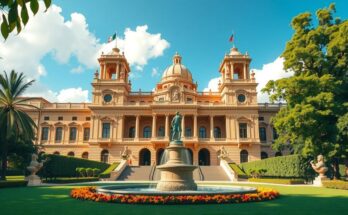President Bola Tinubu has declared a six-month state of emergency in Rivers State due to escalating political upheaval. The state governor, his deputy, and elected assembly members have been suspended. This action marks the fourth instance of emergency rule since Nigeria’s return to democracy in 1999, driven by various crises in Plateau, Ekiti, and the northeastern states.
President Bola Tinubu has declared a state of emergency in Rivers State due to an enduring political crisis that has been escalating since September 2023. In a nation-wide address, the President announced the suspension of Governor Sim Fubara, his deputy, and all elected members of the state House of Assembly for a preliminary period of six months. To administer the state during this emergency, Admiral Ibokette Ibas (retd.), a former Chief of Naval Staff, has been appointed as the administrator.
The 1999 Constitution authorizes the President to declare a state of emergency under specific conditions outlined in Section 305. The declaration must be published in the government gazette and submitted to the National Assembly, where it requires approval by a two-thirds majority, ensuring checks and balances to prevent any potential misuse of executive power.
Since Nigeria returned to democratic governance in 1999, President Tinubu’s declaration represents the fourth instance of a sitting President declaring a state of emergency. Notable prior instances include:
1. Plateau State (2004): In May 2004, President Olusegun Obasanjo declared a state of emergency in Plateau State in response to severe ethno-religious violence. The governor and state assembly were suspended, with Major General Chris Alli (retd.) appointed as administrator to restore order.
2. Ekiti State (2006): Following a leadership crisis stemming from the controversial impeachment of Governor Ayo Fayose in October 2006, President Obasanjo imposed emergency rule. Brigadier General Adetunji Olurin (retd.) served as administrator to stabilize the situation.
3. Borno, Yobe, and Adamawa States (2013): In May 2013, amid increasing Boko Haram insurgency, President Goodluck Jonathan declared a state of emergency in these northeastern states. Notably, governors and state assemblies remained in place, with the federal government deploying additional troops and enforcing curfews to combat insurgent activities.
The declaration of a state of emergency by President Bola Tinubu in Rivers State highlights ongoing political challenges in Nigeria. It also underscores the constitutional provisions that govern such declarations and the historical context of emergency rule in the country. Since 1999, emergency rule has been utilized during significant crises, reflecting the need for governmental intervention in times of instability.
Original Source: punchng.com




